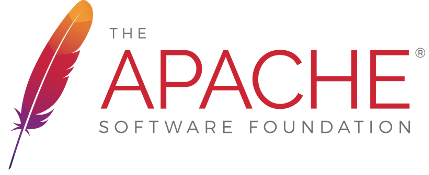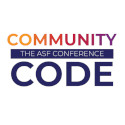Using MTOMSOAP Message Transmission Optimization Mechanism (MTOM) specifies an optimized method for sending binary data as part of a SOAP message. Unlike SOAP with Attachments, MTOM requires the use of XML-binary Optimized Packaging (XOP) packages for transmitting binary data. Using MTOM to send binary data does not require you to fully define the MIME Multipart/Related message as part of the SOAP binding. It does, however, require that you do the following:
Annotating Data Types to use MTOMOverviewWhen defining a data type for passing along a block of binary data, such as an image file or a sound file, in WSDL you define the element for the data to be of type In order to fully take advantage of MTOM you must add annotations to either your service's WSDL document or the JAXB class that implements the binary data structure. Adding the annotations to the WSDL document forces the code generators to generate streaming data handlers for the binary data. Annotating the JAXB class involves specifying the proper content types and may also involve changing the type specification of the field containing the binary data. WSDL firstThe following example shows a WSDL document for a Web service that uses a message which contains one string field, one integer field, and a binary field. The binary field is intended to carry a large image file, so it is not appropriate for sending along as part of a normal SOAP message. Message for MTOM <?xml version="1.0" encoding="UTF-8"?>
<definitions name="XrayStorage"
targetNamespace="http://mediStor.org/x-rays"
xmlns="http://schemas.xmlsoap.org/wsdl/"
xmlns:tns="http://mediStor.org/x-rays"
xmlns:soap12="http://schemas.xmlsoap.org/wsdl/soap12/"
xmlns:xsd1="http://mediStor.org/types/"
xmlns:xsd="http://www.w3.org/2001/XMLSchema">
<types>
<schema targetNamespace="http://mediStor.org/types/"
xmlns="http://www.w3.org/2001/XMLSchema">
<complexType name="xRayType">
<sequence>
<element name="patientName" type="xsd:string" />
<element name="patientNumber" type="xsd:int" />
<element name="imageData" type="xsd:base64Binary" />
</sequence>
</complexType>
<element name="xRay" type="xsd1:xRayType" />
</schema>
</types>
<message name="storRequest">
<part name="record" element="xsd1:xRay"/>
</message>
<message name="storResponse">
<part name="success" type="xsd:boolean"/>
</message>
<portType name="xRayStorage">
<operation name="store">
<input message="tns:storRequest" name="storRequest"/>
<output message="tns:storResponse" name="storResponse"/>
</operation>
</portType>
<binding name="xRayStorageSOAPBinding" type="tns:xRayStorage">
<soap12:binding style="document" transport="http://schemas.xmlsoap.org/soap/http"/>
<operation name="store">
<soap12:operation soapAction="" style="document"/>
<input name="storRequest">
<soap12:body use="literal"/>
</input>
<output name="storResponse">
<soap12:body use="literal"/>
</output>
</operation>
</binding>
...
</definitions>
If you wanted to use MTOM to send the binary part of the message as an optimized attachment you would need to add the The MIME types are maintained by the Internet Assigned Numbers Authority (IANA) and described in detail in Multipurpose Internet Mail Extensions (MIME) Part One: Format of Internet Message Bodies (ftp://ftp.isi.edu/in-notes/rfc2045.txt) and Multipurpose Internet Mail Extensions (MIME) Part Two: Media Types(ftp://ftp.isi.edu/in-notes/rfc2046.txt) For most uses you would specify The following example shows how you would modify Binary Data for MTOM ...
<types>
<schema targetNamespace="http://mediStor.org/types/"
xmlns="http://www.w3.org/2001/XMLSchema"
xmlns:xmime="http://www.w3.org/2005/05/xmlmime">
<complexType name="xRayType">
<sequence>
<element name="patientName" type="xsd:string" />
<element name="patientNumber" type="xsd:int" />
<element name="imageData" type="xsd:base64Binary"
xmime:expectedContentTypes="application/octet-stream"/>
</sequence>
</complexType>
<element name="xRay" type="xsd1:xRayType" />
</schema>
</types>
...
The generated JAXB class generated for You do not need to change the binding element to use MTOM. The runtime will make the appropriate changes when the data is sent. Java firstIf you are doing Java first development you can make your JAXB class MTOM ready by doing the following:
The following example shows a JAXB class annotated for using MTOM. JAXB Class for MTOM @XmlType
public class XRayType {
protected String patientName;
protected int patientNumber;
@XmlMimeType("application/octet-stream")
protected DataHandler imageData;
...
}
Enabling MTOMBy default the runtime does not enable MTOM support. It will send all binary data as either part of the normal SOAP message or as an unoptimized attachment. You can activate MTOM support either programatically or through the use of configuration. Using JAX-WS APIsBoth clients and servers need to have the MTOM optimizations enabled. The JAX-WS APIs offer different mechanisms for each type of endpoint. serverIf you published your server using the JAX-WS APIs you enable the runtime's MTOM support as follows:
ClientTo MTOM enable a JAX-WS client you do the following:
Using configurationOverviewIf you publish your service using XML, such as when deploying into a container, you can enable your endpoint's MTOM support in the endpoint's configuration file. ProcedureThe MTOM property is set inside the
ExampleThe following example shows an endpoint that is MTOM enabled. Configuration for Enabling MTOM <beans xmlns="http://www.springframework.org/schema/beans"
xmlns:xsi="http://www.w3.org/2001/XMLSchema-instance"
xmlns:jaxws="http://cxf.apache.org/jaxws"
xsi:schemaLocation="http://www.springframework.org/schema/beans
http://www.springframework.org/schema/beans/spring-beans-2.0.xsd
http://cxf.apache.org/jaxws http://cxf.apache.org/schema/jaxws.xsd">
<jaxws:endpoint id="xRayStorage"
implementor="demo.spring.xRayStorImpl"
address="http://localhost/xRayStorage">
<jaxws:properties>
<entry key="mtom-enabled" value="true"/>
</jaxws:properties>
</jaxws:endpoint>
</beans>
|

